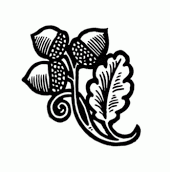I’m (re-)joining Google Fonts
There is a lot of lore around the concept of “20% projects” at Google. Products like Gmail and Google Maps started as 20% projects, where Googlers who had an interesting idea were given a day a week to explore it.
Google Fonts is another one of those products that started this way. For me personally this started with writing an email to an internal typography mailing list after being hired by Google in the London office back in 2010. Wouldn’t it be great if we threw a few open source files onto Google servers for people to use as web fonts (introduced with CSS3 which was the new hotness at the time)?
Turned out, there already were two engineers in Mountain View in California, David Kuettel and Jeremie Lenfant-Engelmann, that were already working on an API that was intended to do exactly that, also in their 20% time.
The rest, as they say, is history. We were able to convince the right people to launch a new product, scale up the bandwidth we were able to dedicate to the project, add more people to the team, and make it happen. At the Google I/O in May we announced the “Google Web Fonts API,” with 12 open source typefaces, a little website to browse those typefaces and some developer documentation.
Makers were now able to reference those font files on Google data centers in their website code, for free and with the benefit of much better performance and load times, partly due to leveraging cross-domain caching of each font across all those websites. The dark era of “web safe” typography had finally started to end. Of course, there were and are other services that provide typography for the web as a service, but I’ve always regarded it as a point of pride that we created an open and free, no-barrier-of-entrance alternative.
A lot has happened since then. The product has been rebranded to Google Fonts and the catalog now includes over 1,000 typefaces that cover a wide array of languages and Unicode scripts. The Google Fonts team has been part of creating and introducing several different kinds of new type technology standards. And by now, large parts of the web use Google Fonts in their website designs. I spun off from the team after we launched version 2 of fonts.google.com in 2011.
Google Fonts eventually joined the Material Design team at Google in 2016. That’s also the team I ended up joining in 2018, after my own journey which included working on Brand Studio, Google Play and Google Messages. Material Design is a wonderful and magical place at Google and has some of the most outstanding designers and thinkers I’ve ever met. I’ve deeply enjoyed working on the design system that is used by Google’s own products and so many others outside the company.
Recently I was offered the opportunity to join the Google Fonts team again as their Design Lead, while staying part of Material at the same time — and after talking to the team about everything that’s in the pipeline, I was very, very excited to accept the role.
There is a lot more we can do to enrich the user experience on the Google Fonts catalog site (and other places users interact with the service). In addition, Variable Fonts are a technology that still has a lot of unexplored potential. And I am thinking of lots of other ways we might bring better access to typography to everyone, and also to further benefit the wider type community.
I can’t wait to get started!
